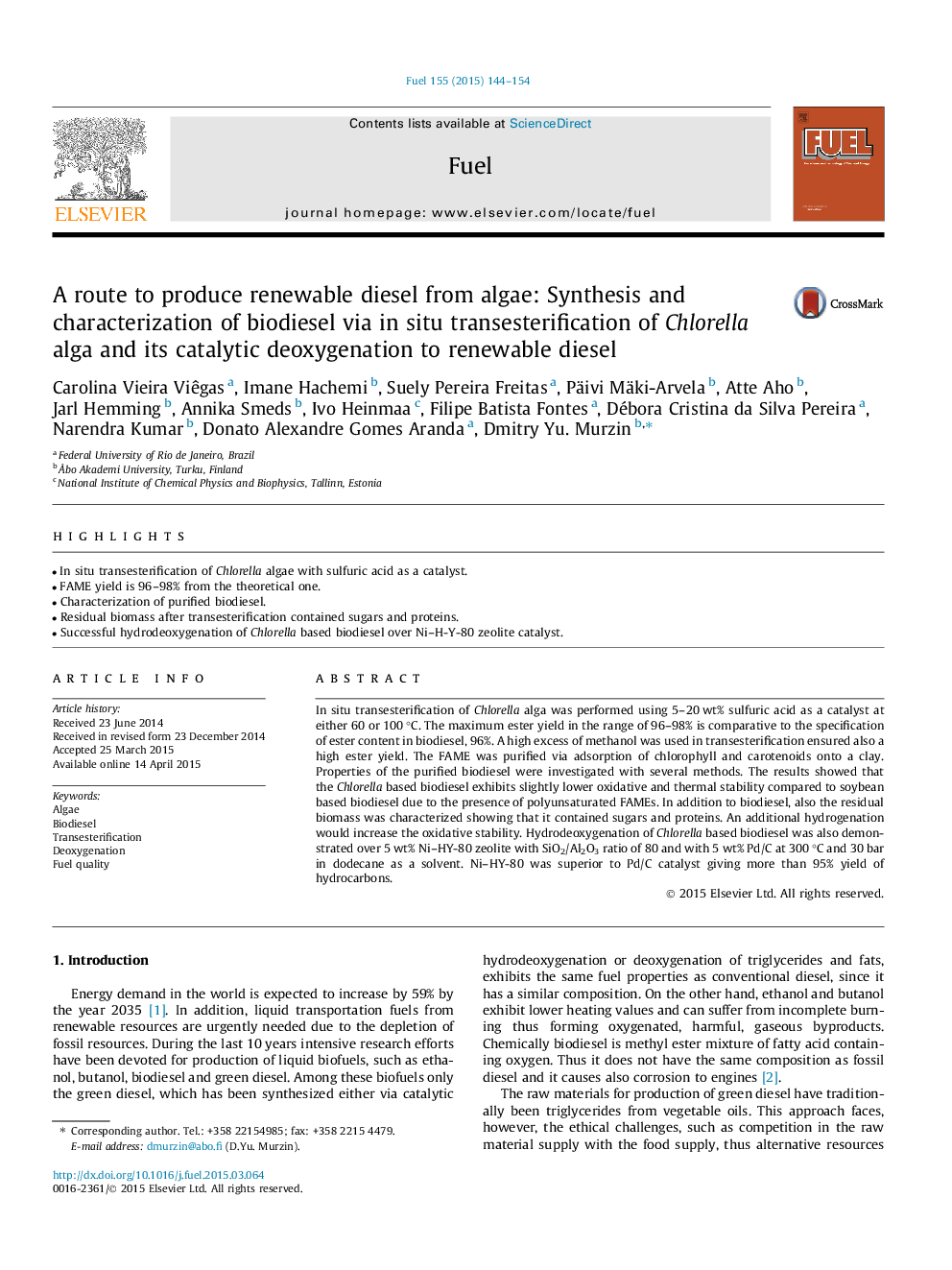| Article ID | Journal | Published Year | Pages | File Type |
|---|---|---|---|---|
| 205604 | Fuel | 2015 | 11 Pages |
•In situ transesterification of Chlorella algae with sulfuric acid as a catalyst.•FAME yield is 96–98% from the theoretical one.•Characterization of purified biodiesel.•Residual biomass after transesterification contained sugars and proteins.•Successful hydrodeoxygenation of Chlorella based biodiesel over Ni–H-Y-80 zeolite catalyst.
In situ transesterification of Chlorella alga was performed using 5–20 wt% sulfuric acid as a catalyst at either 60 or 100 °C. The maximum ester yield in the range of 96–98% is comparative to the specification of ester content in biodiesel, 96%. A high excess of methanol was used in transesterification ensured also a high ester yield. The FAME was purified via adsorption of chlorophyll and carotenoids onto a clay. Properties of the purified biodiesel were investigated with several methods. The results showed that the Chlorella based biodiesel exhibits slightly lower oxidative and thermal stability compared to soybean based biodiesel due to the presence of polyunsaturated FAMEs. In addition to biodiesel, also the residual biomass was characterized showing that it contained sugars and proteins. An additional hydrogenation would increase the oxidative stability. Hydrodeoxygenation of Chlorella based biodiesel was also demonstrated over 5 wt% Ni–HY-80 zeolite with SiO2/Al2O3 ratio of 80 and with 5 wt% Pd/C at 300 °C and 30 bar in dodecane as a solvent. Ni–HY-80 was superior to Pd/C catalyst giving more than 95% yield of hydrocarbons.
